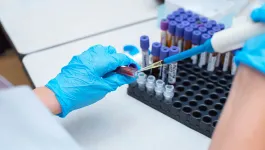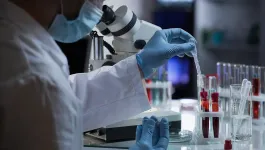The Sickest TTP Patients
80 min
This external medical education webinar is part of the ESICM TTP Centenary Series
Marking a hundred years of TTP research, this webinar on September 23, 2024, focuses on the most severe cases of Thrombotic Thrombocytopenic Purpura (TTP):
- Introduction by Katia Donadello: Sets the stage for discussions on the critical aspects of TTP.
- Organ Dysfunction in TTP by Elie Azoulay: Examines the impact of TTP on various organ systems.
- Cardiac Involvement in Acute and Relapsing TTP by Ygal Benhamou: Investigates the cardiac complications associated with TTP.
- Neurological Complications in TTP by Eric Mariotte: Explores the neurological issues that arise in TTP patients.
- Conclusion of the Webinar by Ygal Benhamou: Summarizes the key points and insights from the webinar.
Speakers: Katia Donadello, Elie Azoulay, Ygal Benhamou, Eric Mariotte
Abbreviations, Glossary and References
Abbreviation
ADAMTS13; A disintegrin and metalloproteinase with a thrombospondin motifs 13
cTTP; Congenital TTP
TTP; Thrombotic thrombocytopenic purpura
Glossary
ADAMTS13; ADAMTS13 (A Disintegrin And Metalloproteinase with ThromboSpondin motifs 13) is a constitutively active enzyme (plasma metalloprotease) that catalyzes the breakdown of ultra large and high molecular weight von Willebrand factor (VWF) into smaller multimers, reducing their thrombogenic potential, and maintaining hemostasis.1,2
Incidence; The rate of new cases or events over a specified period for the population at risk for a certain event.
Microangiopathic hemolytic anemia (MAHA); Process of red blood cell destruction within the microvasculature accompanied by thrombocytopenia due to platelet activation and consumption. Thrombotic thrombocytopenic purpura (TTP) and hemolytic uremic syndrome (HUS) are primary forms of thrombotic microangiopathies.3
Prevalence; The proportion of a particular population found to be affected by a medical condition at a specific time.
Schistocyte; Circulating fragments of red blood cells commonly seen in blood smears from patients with thrombotic microangiopathies including TTP.4
Thrombocytopenia; Refers to a state of reduced peripheral platelets below normal levels (150x109/L) and can be caused by a wide variety of aetiologies that either decrease platelet production or increase platelet consumption.5
Thrombotic microangiopathy (TMA); TMA includes a diverse set of syndromes that can be hereditary or acquired, which can occur in children and adults with sudden or gradual onset.
TMA syndromes, despite being diverse, have a common set of clinical and pathological features: MAHA, thrombocytopenia, organ injury, vascular damage manifested by arteriolar and capillary thrombosis with characteristic abnormalities in the endothelium and vessel wall.6
Thrombotic thrombocytopenic purpura (TTP); TTP is a type of MAHA presenting with moderate or severe thrombocytopenia. There is associated organ dysfunction, including neurologic, cardiac, gastrointestinal and renal involvement; oliguria or anuric renal failure requiring renal replacement therapy is not typically a feature. TTP is confirmed by a severe deficiency (<10%) of ADAMTS13 activity.7
von Willebrand factor (VWF); VWF plays two key roles in hemostasis: 1) in primary (platelet-mediated) hemostasis, VWF binds to collagen and platelets thus promoting platelet activation and aggregation, and 2) in secondary (coagulation factor mediated) hemostasis VWF binds factor VIII (FVIII) protecting FVIII from rapid clearance. When VWF binds to collagen following vascular injury, it releases FVIII, leading to FVIII activation and initiation of the coagulation cascade.8,9
References
- Markham-Lee, Z., N.V. Morgan, and J. Emsley, Inherited ADAMTS13 mutations associated with Thrombotic Thrombocytopenic Purpura: a short review and update. Platelets, 2023. 34(1): p. 2138306.
- Kremer Hovinga, J.A., et al., Thrombotic thrombocytopenic purpura. Nat Rev Dis Primers, 2017. 3: p. 17020.
- Arnold, D.M., C.J. Patriquin, and I. Nazy, Thrombotic microangiopathies: a general approach to diagnosis and management. CMAJ, 2017. 189(4): p. E153-E159.
- Zini, G., et al., ICSH recommendations for identification, diagnostic value, and quantitation of schistocytes. Int J Lab Hematol, 2012. 34(2): p. 107-116.
- Gauer, R.L. and M.M. Braun, Thrombocytopenia. Am Fam Physician, 2012. 85(6): p. 612-622.
- George, J.N. and C.M. Nester, Syndromes of thrombotic microangiopathy. N Engl J Med, 2014. 371(7): p. 654-666.
- Scully, M., et al., Consensus on the standardization of terminology in thrombotic thrombocytopenic purpura and related thrombotic microangiopathies. J Thromb Haemost, 2017. 15(2): p. 312-322.
- Rauch, A., et al., On the versatility of von Willebrand factor. Mediterr J Hematol Infect Dis, 2013. 5(1): p. e2013046.
- Stockschlaeder, M., R. Schneppenheim, and U. Budde, Update on von Willebrand factor multimers: focus on high-molecular-weight multimers and their role in hemostasis. Blood Coagul Fibrinolysis, 2014. 25(3): p. 206-216.



